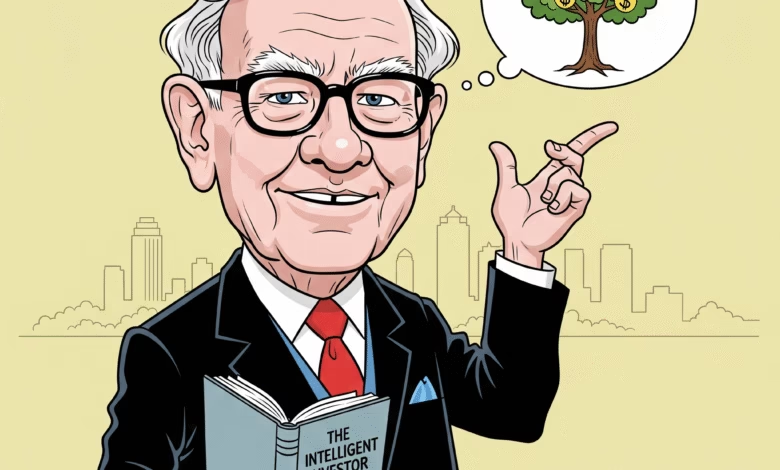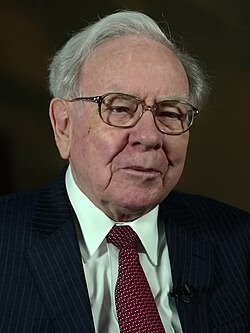How Warren Buffett Built Wealth Through Stocks
Understand the trajectory of the great investor Warren Buffet with stocks

In the world of investing, one name stands above all others: Warren Buffett. Known as the “Oracle of Omaha,” he is a living legend, a man who transformed a small textile company, Berkshire Hathaway, into a global conglomerate worth hundreds of billions of dollars. He did this not through complex algorithms, high-frequency trading, or speculative bets, but through a disciplined, patient, and profoundly simple investment philosophy that has stood the test of time.
For decades, investors, entrepreneurs, and everyday people have studied Buffett’s methods, hoping to glean the secrets to his phenomenal success. The good news? His strategy isn’t a secret at all. It’s built on principles of business sense, discipline, and long-term thinking that anyone can understand and learn from.
This guide will explore the core tenets of how Warren Buffett built his wealth through the stock market. We will delve into his foundational principles, the key concepts that guide his decisions, and the timeless wisdom he has shared with the world. Understanding his approach won’t just make you a more knowledgeable investor; it will change the way you think about money, business, and the path to building lasting wealth.
The Foundation: Learning From the Father of Value Investing

No discussion of Warren Buffett is complete without mentioning his mentor, Benjamin Graham. While a student at Columbia Business School, Buffett was deeply influenced by Graham, the author of the seminal investing texts, Security Analysis and The Intelligent Investor. Graham is widely considered the “father of value investing,” the philosophy that underpins Buffett’s entire approach.
Value investing is the strategy of buying stocks for less than their calculated intrinsic value. Graham taught Buffett to view a stock not as a blinking ticker symbol on a screen, but as a small piece of ownership in a real business. The goal is to determine what that business is fundamentally worth and then buy it at a significant discount to that worth.
This discount is what Graham called the “margin of safety.” It’s the buffer that protects an investor from bad luck or errors in judgment. By insisting on a margin of safety, you ensure that you are buying an asset with a built-in cushion against risk. This principle became the bedrock of Buffett’s investment career.
Buffett’s Core Investment Principles: How to Think Like the Oracle
While his philosophy has evolved over the years, Buffett has consistently adhered to a set of core principles that guide every investment decision made at Berkshire Hathaway. These are not complicated formulas, but rather a framework for disciplined business analysis.
1. The Circle of Competence: Only Invest in What You Understand
This is perhaps Buffett’s most famous rule. He insists on staying within his “circle of competence,” which means he will only invest in businesses and industries that he can thoroughly understand. He needs to be able to explain how the business makes money, what its competitive advantages are, and what its future looks like ten to twenty years from now.
This is why, for decades, Buffett famously avoided technology stocks. It wasn’t because he thought they were bad businesses, but because he admitted he didn’t understand them well enough to predict their long-term winners. He famously said, “The key to investing is not assessing how much an industry is going to affect society, or how much it will grow, but rather determining the competitive advantage of any given company and, above all, the durability of that advantage.”
For the average investor, this lesson is profound: you don’t need to be an expert in everything. Stick to industries and companies you can genuinely comprehend.
2. Demand a Margin of Safety: Never Overpay for a Stock
Straight from the Ben Graham playbook, Buffett never wants to overpay, no matter how wonderful the business is. He calculates what he believes a business is worth and then aims to buy it at a reasonable price that provides a margin of safety.
He compares this to building a bridge: “You build a bridge that a 30,000-pound truck can go across, but you drive 10,000-pound trucks across it. That’s the same principle in investing.” The margin of safety doesn’t guarantee you’ll be right, but it increases your odds of a successful outcome and protects your downside if your analysis is slightly off.
3. Focus on Business Quality, Not Just a Bargain Price
This is where Buffett evolved beyond Graham’s initial teachings. Graham was often a “cigar-butt” investor, looking for deeply cheap, mediocre businesses that had one last “puff” of value left in them.
Influenced by his long-time partner, Charlie Munger, Buffett shifted his focus. He realized it was “far better to buy a wonderful company at a fair price than a fair company at a wonderful price.”
This led him to seek out truly exceptional businesses—companies with durable competitive advantages, strong management, and consistent earning power. He was now willing to pay a higher, yet still fair, price for superior quality, recognizing that a great business would compound its value for decades to come.
Beyond the Numbers: The Power of an “Economic Moat”

To identify these “wonderful companies,” Buffett popularized the concept of an “economic moat.” Just as a medieval castle was protected from invaders by a wide moat filled with water, a great business is protected from its competitors by a durable competitive advantage. This “moat” allows the company to fend off rivals and earn high returns on capital for very long periods.
Buffett looks for several types of economic moats:
- Intangible Assets: This includes powerful brand names (like Coca-Cola), patents (like a pharmaceutical company), or regulatory licenses that are difficult for competitors to replicate.
- Cost Advantages: The ability to produce goods or services at a lower cost than rivals. This could be due to superior scale (like Walmart) or a unique process.
- Switching Costs: When it is too expensive, time-consuming, or risky for a customer to switch from one provider to another. Think of the software that runs a bank’s entire operations; switching would be a nightmare.
- Network Effect: When the value of a product or service increases as more people use it. A credit card company like American Express is a classic example—more merchants accept it because more cardholders have it, and more cardholders get it because more merchants accept it.
For Buffett, the most important question is not how much a company earned last quarter, but how wide and sustainable its economic moat is.
Patience Is a Virtue: Buffett’s “Buy and Hold Forever” Approach
In today’s world of rapid-fire trading, Buffett’s time horizon is almost unfathomable. His favorite holding period is “forever.”
When he buys a stock, he is not making a short-term bet on its price movement. He is buying a piece of a business with the intention of holding it for decades. This long-term perspective offers several key advantages:
- It allows the power of compounding to work its magic. Albert Einstein reportedly called compound interest the “eighth wonder of the world.” By holding great businesses for long periods, Buffett allows their earnings (and his investment) to grow exponentially.
- It reduces costs. Constant trading racks up transaction fees and taxes on capital gains. A buy-and-hold strategy is far more efficient from a tax and cost perspective.
- It promotes rational decision-making. By focusing on the long-term health of the business, Buffett is not swayed by the market’s short-term emotional swings, which he calls “Mr. Market’s” manic-depressive moods.
He famously said, “The stock market is a device for transferring money from the impatient to the patient.”
Case Studies in Success: A Look at Buffett’s Greatest Investments
To see his philosophy in action, let’s look at two of his most iconic investments.
Coca-Cola (KO): The Power of a Brand Moat

In 1988, following the stock market crash of 1987, Buffett invested over $1 billion to acquire a major stake in The Coca-Cola Company. While others were panicking, Buffett saw a “wonderful company at a fair price.” He recognized that Coca-Cola’s brand was one of the most powerful economic moats in the world. The name itself evoked happiness and refreshment in the minds of billions of people globally. This brand power allowed Coke to command premium pricing and dominate the beverage industry. He held onto the investment, and through decades of growth and reinvested dividends, it has generated tens of billions of dollars in value for Berkshire Hathaway.
Apple (AAPL): An Evolution in Thinking

For years, Buffett avoided tech. But in 2016, Berkshire began buying shares of Apple. Why the change? Buffett came to see Apple not as a technology company, but as a consumer products company with an incredibly powerful ecosystem. He understood the fierce loyalty of its customer base and the immense “switching costs” associated with leaving the Apple ecosystem (iPhone, Mac, iCloud, etc.). He saw its brand as a powerful moat and recognized its incredible ability to generate cash. Today, Apple is Berkshire Hathaway’s largest single stock holding, a testament to Buffett’s ability to adapt his principles to a changing world.
Warren Buffett’s Timeless Advice for the Everyday Investor
You don’t need a PhD in finance to follow Buffett’s wisdom. In his letters to shareholders, he has consistently offered simple, powerful advice for everyday investors:
- Invest for the long term. Don’t try to time the market. Buy good businesses and hold them.
- Keep costs low. Buffett is a huge proponent of low-cost S&P 500 index funds for most people who don’t have the time or desire to research individual companies.
- Be fearful when others are greedy and greedy when others are fearful. The best opportunities often arise during times of market panic.
- Never invest in a business you cannot understand. Stick to your circle of competence.
- Read, and read a lot. Buffett spends most of his day reading. Knowledge is the foundation of sound decision-making.
Warren Buffett’s legacy is not just the immense wealth he has built, but the clear and simple roadmap he has provided. His success is a powerful testament to the idea that investing doesn’t have to be complicated. By focusing on quality, demanding a margin of safety, and having the patience to let your investments grow, you can follow in the footsteps of the Oracle himself.





